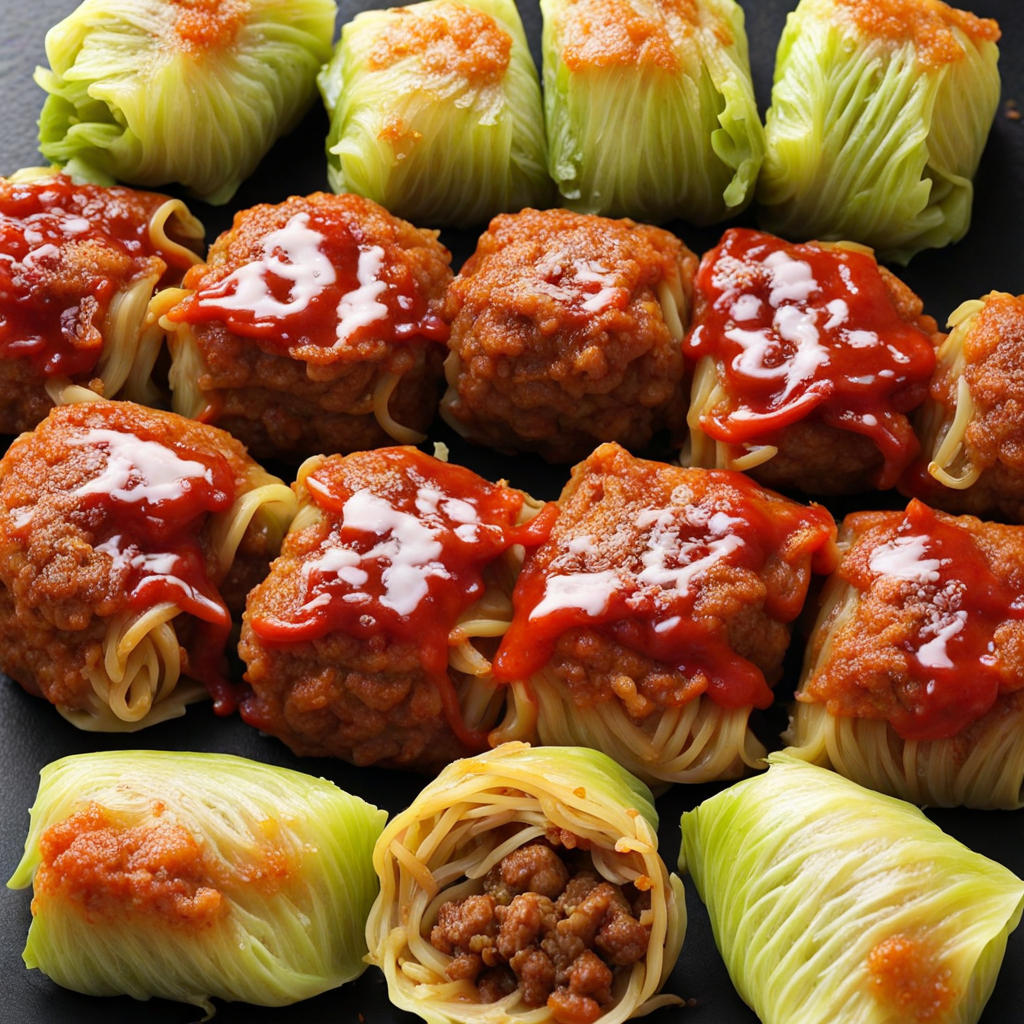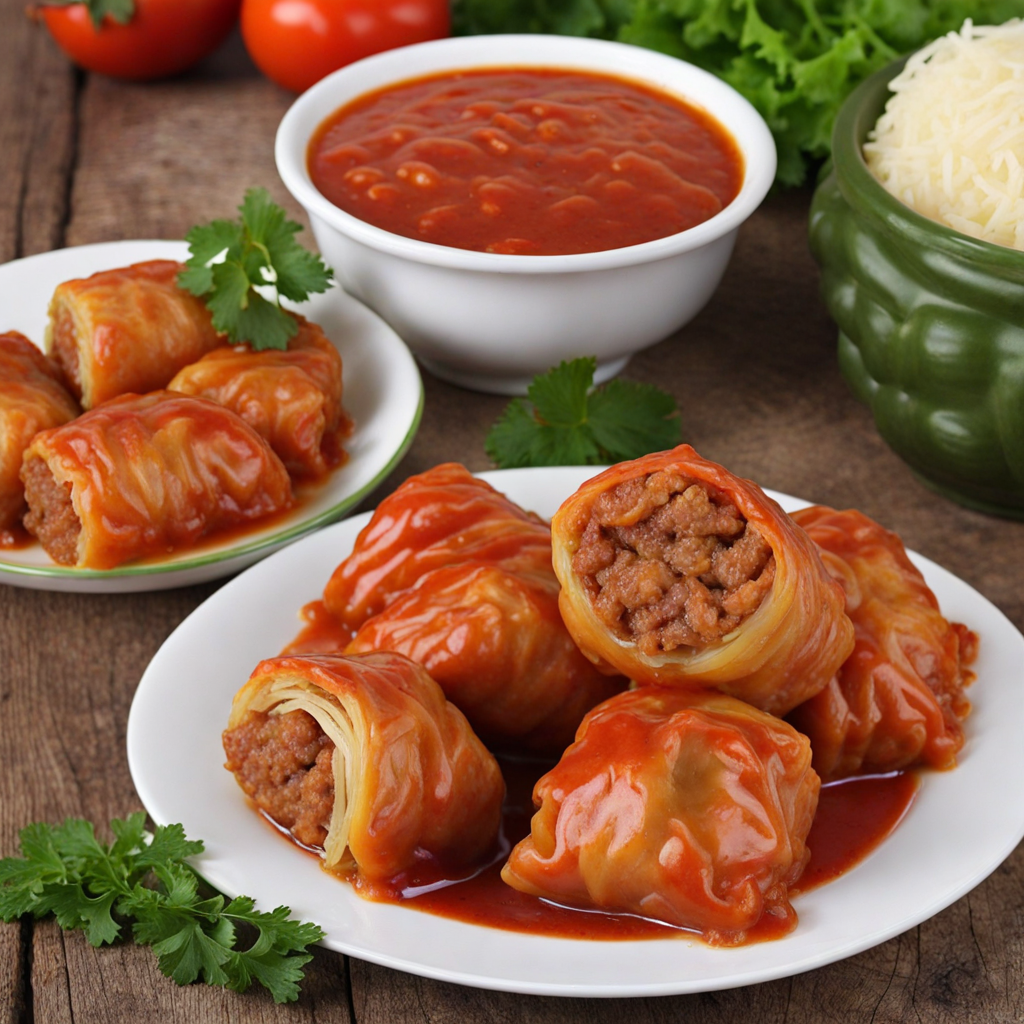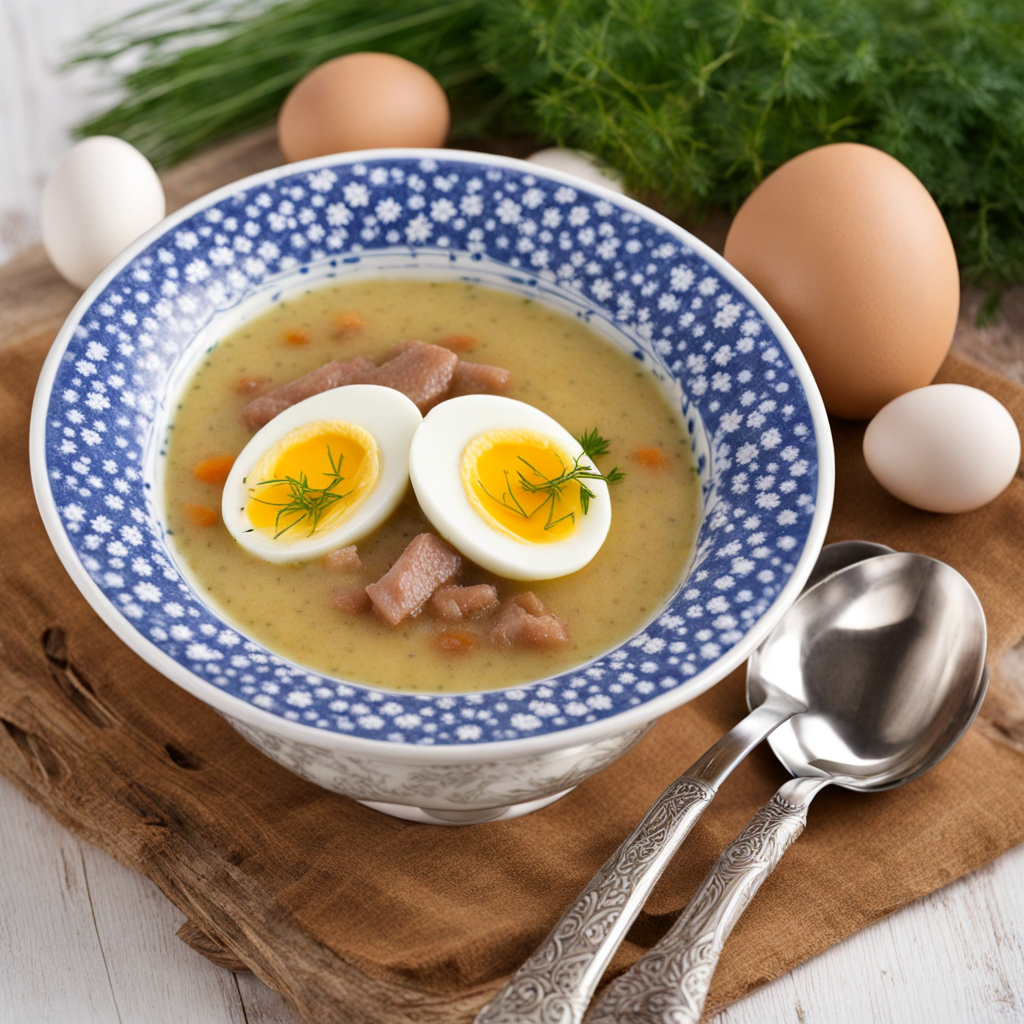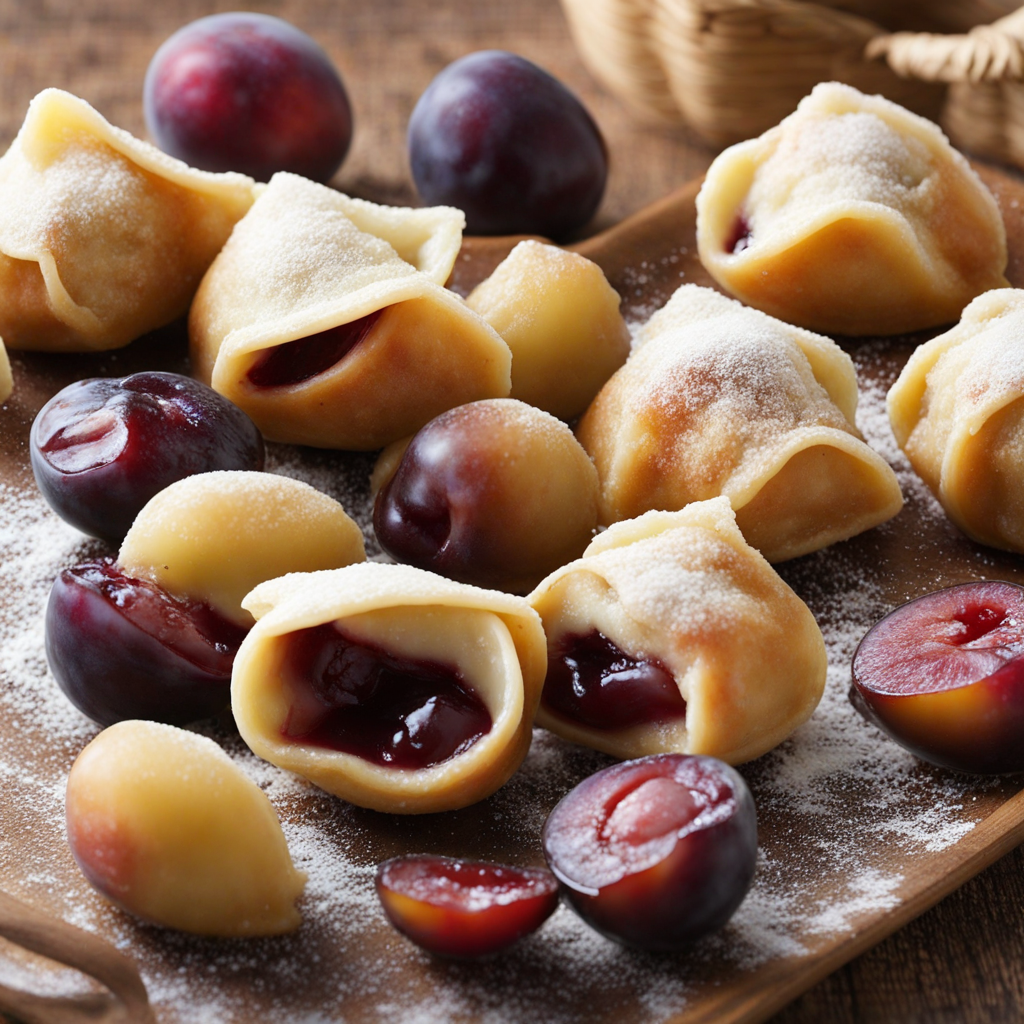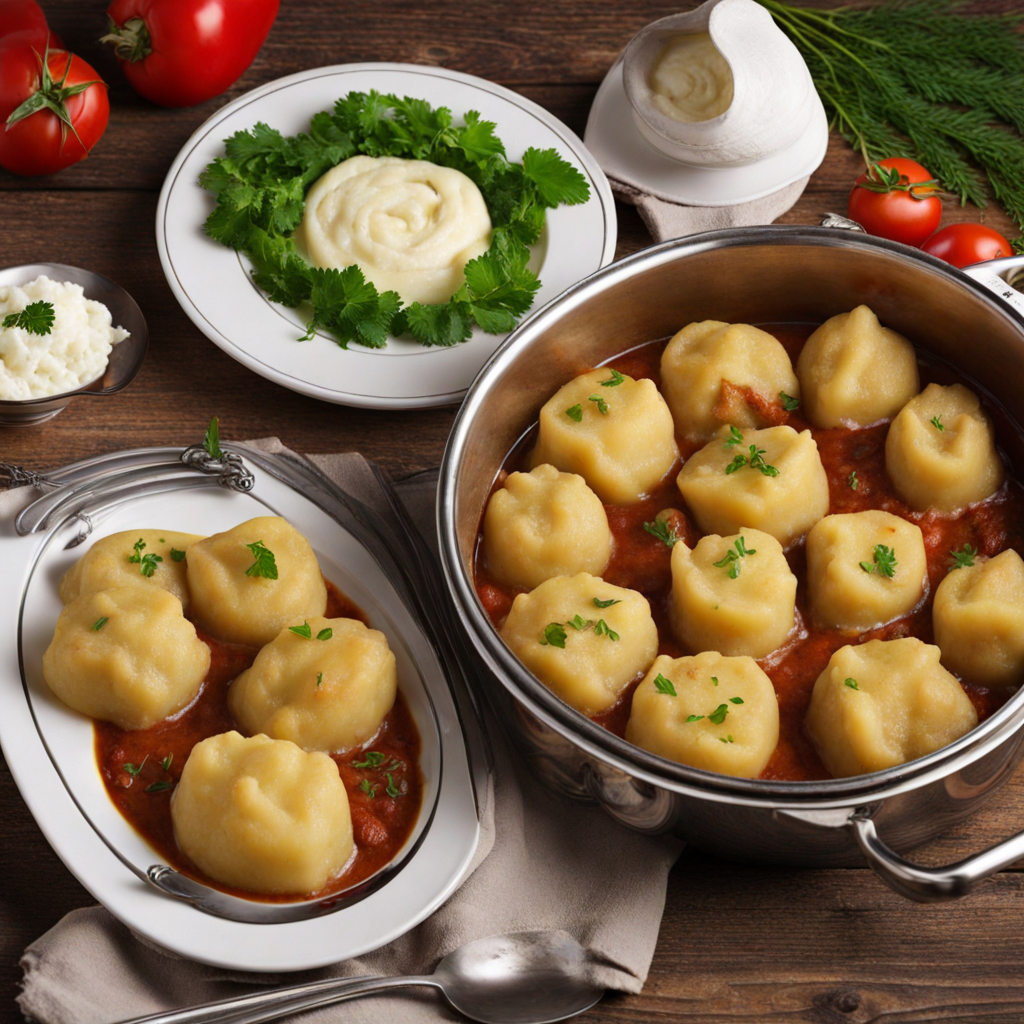Gołąbki
Gołąbki, a traditional Polish dish, is a delightful culinary experience that showcases the rich flavors and heartwarming essence of Polish cuisine. The name translates to "little pigeons," which refers to the dish's appearance rather than its ingredients. At its core, Gołąbki consists of cabbage leaves stuffed with a savory filling, typically made of minced meat—usually pork or beef—combined with rice or barley, onions, and a blend of spices. Each cabbage roll is carefully wrapped, resembling a small, plump package that retains its moisture and flavor during cooking, creating a comforting and satisfying bite. The preparation of Gołąbki involves a few key steps that elevate its taste profile. The cabbage leaves are blanched to soften them, allowing for easier rolling, while the filling is seasoned to perfection, often enhanced with herbs like dill or marjoram. Once assembled, the rolls are nestled in a pot and simmered in a rich tomato sauce or broth, which seeps into the rolls, imparting a delightful tanginess that balances the savory filling. This slow-cooking method ensures that the Gołąbki become tender, with every bite offering a harmonious blend of textures and flavors that reflect the essence of home-cooked Polish meals. When served, Gołąbki are often accompanied by a dollop of sour cream, which adds a creamy richness that complements the savory filling and tangy sauce. This dish is a staple at family gatherings and festive occasions, symbolizing warmth and togetherness. The experience of savoring Gołąbki is not just about taste; it’s about embracing a tradition that has been passed down through generations, making it a perfect choice for anyone looking to discover the comforting flavors of Polish cuisine.
How It Became This Dish
Gołąbki: A Culinary Journey through Polish Tradition #### Origins of Gołąbki Gołąbki, often affectionately referred to as “little doves” in Polish, is a traditional dish that has become emblematic of Polish cuisine. The name itself suggests a sense of comfort and homeliness, evoking images of family gatherings and communal meals. The dish consists of cabbage leaves stuffed with a savory filling, typically made from minced meat, rice, and spices, then baked in a tomato or mushroom sauce. The origins of gołąbki can be traced back to the early Middle Ages, as cabbage was a staple crop in Central and Eastern Europe. The use of cabbage for wrapping fillings is believed to have been inspired by similar practices in other cultures, including the Mediterranean and the Middle East, where grape leaves or other greens were utilized in a comparable fashion. The adaptation of this technique to local ingredients, particularly cabbage, highlights the resourcefulness of Polish cooks throughout history. #### Cultural Significance Gołąbki holds a special place in Polish culture, often associated with family celebrations, religious holidays, and communal gatherings. It is a dish that transcends social classes, enjoyed by the affluent and the working class alike. Traditionally, it is prepared in large quantities, making it ideal for feeding extended families and guests during festive occasions such as Christmas, Easter, and weddings. In Poland, food is not merely sustenance; it is a means of preserving cultural identity. Gołąbki embodies the spirit of Polish hospitality, as it is often served to guests as a gesture of warmth and welcome. Beyond its physical nourishment, it serves as a symbol of familial love and continuity, linking generations through shared recipes and cooking practices. The dish also reflects the importance of cabbage in Polish agriculture. Cabbage is a hardy vegetable that thrives in the country’s climate, making it a reliable food source throughout the year. This resilience is mirrored in the Polish people, who have historically faced numerous challenges, from invasions to economic hardships. The ability to transform humble ingredients into a comforting meal is a testament to the ingenuity and perseverance of Polish culinary traditions. #### Evolution Over Time The evolution of gołąbki is a fascinating narrative that intertwines with Poland's tumultuous history. During the partitions of Poland in the 18th and 19th centuries, when the country was divided among Russia, Prussia, and Austria, cuisine was heavily influenced by the occupying powers. This led to the incorporation of various regional flavors and techniques into traditional Polish dishes, including gołąbki. In the 20th century, particularly after World War II, Poland underwent significant social and economic changes. The rise of communism and state-controlled agriculture altered food production and availability. As a result, gołąbki began to adapt once again. With limited access to certain meats and ingredients, creative substitutions became common. Vegetarian versions emerged, utilizing grains, lentils, or mushrooms as fillings, which reflected the changing landscape of Polish society and the evolving dietary preferences of its people. The 1980s and 1990s marked a period of transformation as Poland transitioned to a market economy. This change brought about a revival of traditional foods, including gołąbki, as people sought to reconnect with their culinary heritage. Cookbooks and culinary programs began to feature regional dishes, sparking a renewed interest in traditional Polish cuisine. Restaurants that specialized in Polish fare blossomed, offering gołąbki as a staple item on their menus. #### Modern Interpretations Today, gołąbki continues to be cherished in Poland and among Polish communities worldwide. It is often served in homes, at family gatherings, and during cultural festivals, celebrated not only for its taste but also for its nostalgic value. Chefs and home cooks alike are experimenting with new variations, reflecting contemporary trends while honoring the traditional recipe. Modern interpretations of gołąbki may include innovative fillings such as quinoa, wild rice, or even seafood, catering to diverse palates and dietary preferences. Additionally, the rise of veganism and vegetarianism has led to the creation of plant-based versions, ensuring that gołąbki remains relevant in a changing culinary landscape. Furthermore, the dish has gained international attention, appearing on menus in Polish restaurants across the globe, especially in cities with significant Polish diasporas like Chicago, London, and Toronto. Food festivals and cultural events often feature gołąbki, allowing a broader audience to experience this cherished dish. #### Conclusion Gołąbki is more than just a meal; it is a reflection of Polish history, culture, and resilience. From its origins as a humble peasant dish to its status as a beloved national symbol, gołąbki embodies the spirit of togetherness and the rich tapestry of Polish culinary traditions. As it continues to evolve in modern kitchens, the essence of gołąbki remains rooted in the values of family, hospitality, and the celebration of heritage. As we savor each bite of gołąbki, we not only enjoy a delicious dish but also partake in a shared history that transcends generations, connecting us to the past while inviting us to explore the future of Polish cuisine.
You may like
Discover local flavors from Poland


